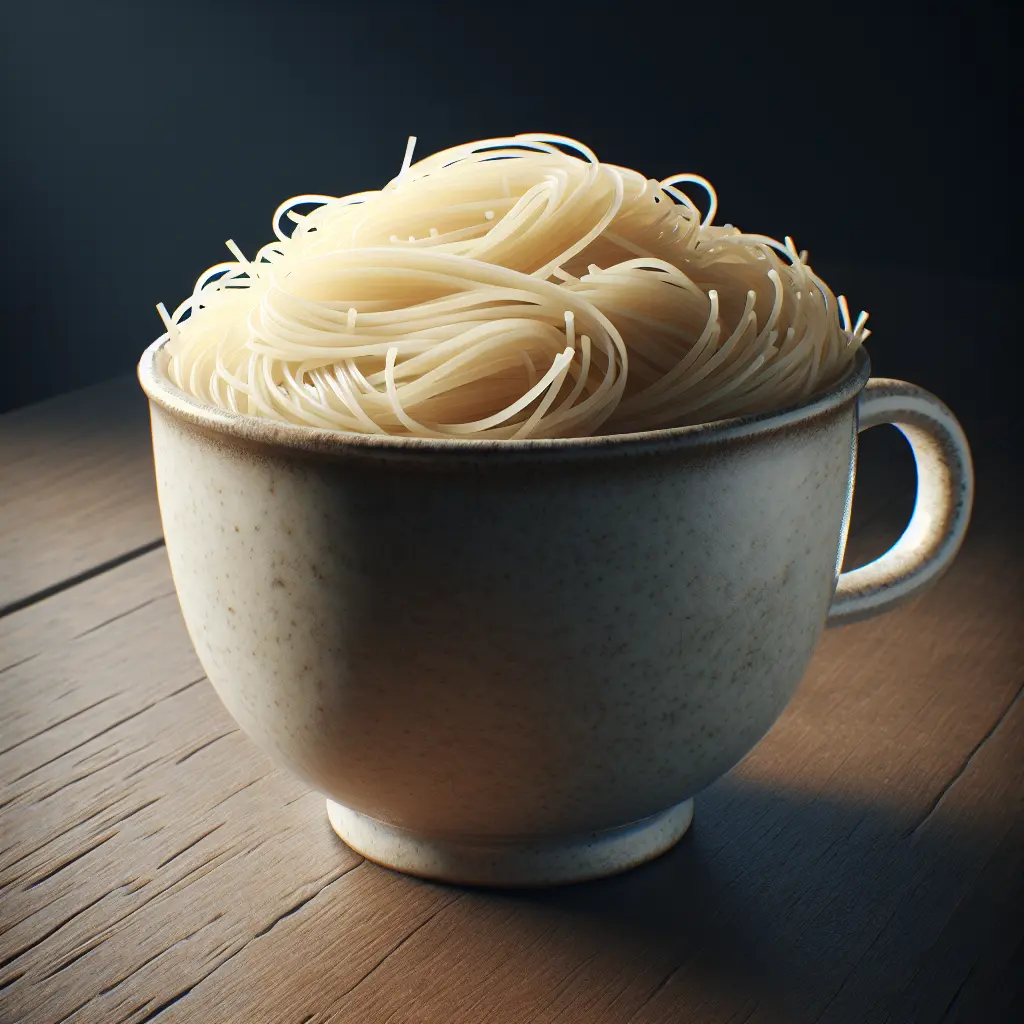Vermicelli: A Culinary Delicacy with a Rich History
Vermicelli, originating from the Italian word 'vermicello,' meaning 'little worm,' has been a cherished culinary ingredient for centuries. Its history can be traced back to ancient China, where it was initially made from mung beans or rice flour. Over time, vermicelli spread throughout Asia and the Middle East, becoming an integral part of various culinary traditions.
Today, vermicelli is commonly made from wheat flour, though variations using rice flour, soy flour, or vegetable starches also exist. Its thin, spaghetti-like strands are typically bundled into nests or coils, ready to be incorporated into a wide range of culinary creations.
Nutritional Value of Vermicelli: A Balanced Choice
Vermicelli offers a well-balanced nutritional profile, making it a suitable choice for those seeking a healthy and satisfying meal. A 1-cup serving of cooked vermicelli provides approximately:
- Calories: 221
- Protein: 8.1 grams
- Fat: 1.3 grams
- Carbohydrates: 43 grams
- Fiber: 2.5 grams
- Sugar: 0.8 grams
Vermicelli is a good source of energy, providing a moderate amount of complex carbohydrates. It also contains a significant amount of protein, essential for muscle growth and repair. Additionally, vermicelli is low in fat and sugar, making it a heart-healthy choice.
Culinary Versatility of Vermicelli: From Soups to Salads
Vermicelli's culinary versatility is truly remarkable. Its delicate texture and neutral flavor allow it to blend seamlessly into various dishes, adding a touch of elegance and nourishment. Here are a few ways to incorporate vermicelli into your cooking:
- Soups: Vermicelli is a classic ingredient in many traditional soups, such as Vietnamese pho and Chinese wonton soup. Its thin strands absorb the flavorful broth, creating a comforting and satisfying meal.
- Stir-fries: Vermicelli adds a delicate texture and subtle flavor to stir-fries. It can be stir-fried with vegetables, meats, and sauces, creating a quick and easy weeknight meal.
- Salads: Vermicelli can be used as a base for refreshing salads. It pairs well with fresh vegetables, herbs, and a light dressing, creating a healthy and flavorful lunch or side dish.
- Desserts: In some cultures, vermicelli is used in sweet preparations, such as vermicelli kheer in India. These desserts combine the delicate texture of vermicelli with the sweetness of milk and sugar, creating a delightful treat.
Conclusion: Vermicelli, a Culinary Gem Worth Exploring
Vermicelli, with its delicate texture, versatile nature, and nutritional value, is a culinary gem worth exploring. Whether used in soups, stir-fries, salads, or desserts, vermicelli adds a touch of elegance and nourishment to every meal. So, next time you're looking for a healthy and flavorful addition to your cooking, reach for vermicelli and unleash your culinary creativity.
How many calories are in Vermicelli?
Each 1 cup of Vermicelli contains 221 calories.
Vermicelli Nutritional Information
| Nutrient | Amount per 1 cup (140g) |
|---|---|
| Calories | 221 Calories |
| Protein | 8.1g |
| Fat | 1.3g |
| Saturated Fat | 0.3g |
| Cholesterol | 0mg |
| Carbohydrates | 43g |
| Dietary Fiber | 2.5g |
| Sugar | 0.8g |
| Sodium | 0.0014mg |
| Potassium | 0.0616mg |
| Calcium | 0.0098mg |
| Iron | 0.0018mg |
